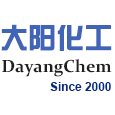Products Categories
| CAS No.: | 109431-87-0 |
|---|---|
| Name: | (R)-(-)-N-Boc-3-pyrrolidinol |
| Article Data: | 3 |
| Molecular Structure: | |
|
|
|
| Formula: | C9H17NO3 |
| Molecular Weight: | 187.239 |
| Synonyms: | 1-Pyrrolidinecarboxylicacid, 3-hydroxy-, 1,1-dimethylethyl ester, (R)-;(3R)-1-(tert-Butoxycarbonyl)-3-hydroxypyrrolidine;(R)-(-)-N-(tert-Butoxycarbonyl)-3-hydroxypyrrolidine;(R)-1-(tert-Butoxycarbonyl)-3-hydroxypyrrolidine;(R)-1-Boc-3-hydroxypyrrolidine;(R)-3-Hydroxy-1-tert-butoxycarbonylpyrrolidine;(R)-3-Hydroxypyrrolidine-1-carboxylic acid tert-butyl ester;(R)-N-(t-Butyloxycarbonyl)-3-hydroxypyrrolidine;(R)-N-Boc-3-hydroxypyrrolidine;1,1-Dimethylethyl(3R)-3-hydroxy-1-pyrrolidinecarboxylate;N-(tert-Butoxycarbonyl)-(R)-(-)-3-pyrrolidinol;N-Boc-(R)-(-)-3-pyrrolidinol; |
| Density: | 1.142 g/cm3 |
| Melting Point: | 62-65 °C(lit.) |
| Boiling Point: | 273.3 °C at 760 mmHg |
| Flash Point: | 119.1 °C |
| Appearance: | White to off-white powder |
| Hazard Symbols: |
 Xi Xi
|
| Risk Codes: | 36/37/38-53-50 |
| Safety: | 26-36 |
| PSA: | 49.77000 |
| LogP: | 0.92600 |
- 144851-82-1METHYL2-AMINO-3-FLUOROBENZOATE
- 483366-12-7(2S,4R)-1-Boc-2-cyano-4-hydroxypyrrolidine
- 173606-50-3BOC-10-AMINODECANOIC ACID
- 361456-36-2METHYL (R)-(+)-ISOCYANATO-3-PHENYLPROPI&
- 5156-58-1N-(1-Benzyl-4-pipperidinyl)-N-phenylpropanamide HCl
- 81281-59-67-Benzylideneaminotheophylline
- 50288-62-5threo-Phenyl-2-piperidyl acetamide
- 82993-81-5D-threo-Ritalinic acid hydrochloride
- 47087-37-6Z-D-Glu-OMe
- 1219080-61-1IMIDAZOLE-2-BORONIC ACID

What can I do for you?
Get Best Price
Specification
The CAS register number of (R)-N-Boc-3-pyrrolidinol is 109431-87-0. It also can be called as N-tert-Butoxycarbonyl-(R)-(-)-3-pyrrolidinol and the IUPAC name about this chemical is tert-butyl (3R)-3-hydroxypyrrolidine-1-carboxylate. The molecular formula about this chemical is C9H17NO3 and the molecular weight is 187.24. It belongs to the following product categories, such as Pharmacetical; Benzenes; Chiral Building Blocks; Simple Alcohols (Chiral); Synthetic Organic Chemistry; Chiral chemicals and so on. This chemical is stable under normal temperature and pressure, if you want to store it, please keep it in a closed, cool and dry container, you also need avoid contact with strong oxidizing agents.
Physical properties about (R)-N-Boc-3-pyrrolidinol are: (1)ACD/LogP: -0.08; (2)ACD/LogD (pH 5.5): -0.08; (3)ACD/LogD (pH 7.4): -0.08; (4)ACD/BCF (pH 5.5): 1; (5)ACD/BCF (pH 7.4): 1; (6)ACD/KOC (pH 5.5): 21.66; (7)ACD/KOC (pH 7.4): 21.66; (8)#H bond acceptors: 4; (9)#H bond donors: 1; (10)#Freely Rotating Bonds: 3; (11)Polar Surface Area: 38.77Å2; (12)Index of Refraction: 1.502; (13)Molar Refractivity: 48.41 cm3; (14)Molar Volume: 163.9 cm3; (15)Polarizability: 19.19x10-24cm3; (16)Surface Tension: 44.7 dyne/cm; (17)Enthalpy of Vaporization: 59.4 kJ/mol; (18)Boiling Point: 273.3 °C at 760 mmHg; (19)Vapour Pressure: 0.000742 mmHg at 25°C.
When you are using this chemical, please be cautious about it as the following:
This chemical is very toxic to aquatic organisms and it is irritating to eyes, respiratory system and skin, it may cause long-term adverse effects in the aquatic environment. When you are using it, wear suitable protective clothing. In case of contact with eyes, rinse immediately with plenty of water and seek medical advice.
You can still convert the following datas into molecular structure:
(1)SMILES: O=C(OC(C)(C)C)N1CC[C@@H](O)C1
(2)InChI: InChI=1/C9H17NO3/c1-9(2,3)13-8(12)10-5-4-7(11)6-10/h7,11H,4-6H2,1-3H3/t7-/m1/s1
(3)InChIKey: APCBTRDHCDOPNY-SSDOTTSWBK
(4)Std. InChI: InChI=1S/C9H17NO3/c1-9(2,3)13-8(12)10-5-4-7(11)6-10/h7,11H,4-6H2,1-3H3/t7-/m1/s1
(5)Std. InChIKey: APCBTRDHCDOPNY-SSDOTTSWSA-N
-
Premium Related Products

